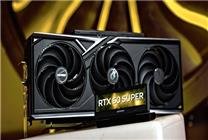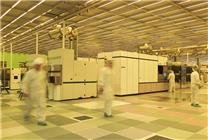Rising Memory Prices: Impact on AI and Graphics Cards
Summary:
- Major chip manufacturers, including Samsung, SK Hynix, and Micron, have raised memory prices by 20-30%.
- The surge in demand for AI, particularly for HBM memory, is driving these increases.
- Common electronics, including graphics cards, will experience supply constraints, affecting performance and pricing.
The recent announcement from major memory chip manufacturers, including Samsung, SK Hynix, and Micron, has stirred significant attention in the tech industry. These companies have begun a price escalation affecting various memory products, with increases ranging from 20% to 30%. This shift is particularly notable given the broader economic context of declining demand in traditional sectors such as PCs and mobile devices.
The Driving Force: AI Demand
The primary catalyst for this uptick in memory prices is the explosive growth in artificial intelligence (AI) applications. As organizations invest heavily in AI technologies, the requirement for high-bandwidth memory (HBM) has surged. This increase in demand is stretching the production capacities of memory chip manufacturers, forcing them to elevate prices across the board. In contrast, the demand for memory in consumer electronics like PCs and mobile devices appears to be on the decline, which may dampen future growth in those markets.
The implications of this price increase extend well beyond the realm of AI. Everyday electronic products, including traditional memory sticks and mobile phones, will likely see increased costs. Notably, graphics cards, which rely heavily on advanced memory types like GDDR6 and GDDR7, are also expected to feel the pinch. This situation represents a significant challenge for gamers and professionals who depend on these components for enhanced performance.
Graphics Cards Under Pressure
The effects of rising memory prices are expected to impact NVIDIA’s RTX series graphics cards substantially, particularly the upcoming RTX 50 Super series. Reports suggest that the release of this series will be postponed to early next year due to these supply chain constraints.
The RTX 50 Super series is designed to leverage improved video memory, with most models expected to see memory upgrades from 2GB to 3GB. This represents a 50% increase in memory capacity while maintaining a relatively unchanged number of CUDA cores.
However, an exception within this series is the RTX 5070 Super. This model not only increases CUDA cores from 6144 to 6400, a modest 4.2% boost, but also boosts video memory significantly from 12GB to 18GB. The power consumption for this model will see a slight rise from 250W to 275W, or an increase of just 10%.
Overall Performance Enhancement
In terms of overall performance, users can expect improvements of approximately 10% from the RTX 50 Super series, although this comes with an added price tag of about 5-10%. This pricing strategy does not appear to align with a straightforward increase in performance or memory capacity, suggesting a strategic decision by manufacturers in response to current market dynamics.
Conclusion
As the world witnesses an unprecedented demand for AI-driven technologies, the ripple effects of increased memory prices are becoming evident across various sectors. Consumers and tech enthusiasts should prepare for higher costs and potential delays in new product releases, especially in the graphics card sector. As manufacturers work to balance supply and demand, it’s clear that the landscape of consumer electronics will continue to evolve, influenced significantly by the demands of advanced technology.
In summary, while the AI boom creates new opportunities, it also poses challenges for traditional electronics markets, shaping the future of the tech industry in unforeseen ways.







